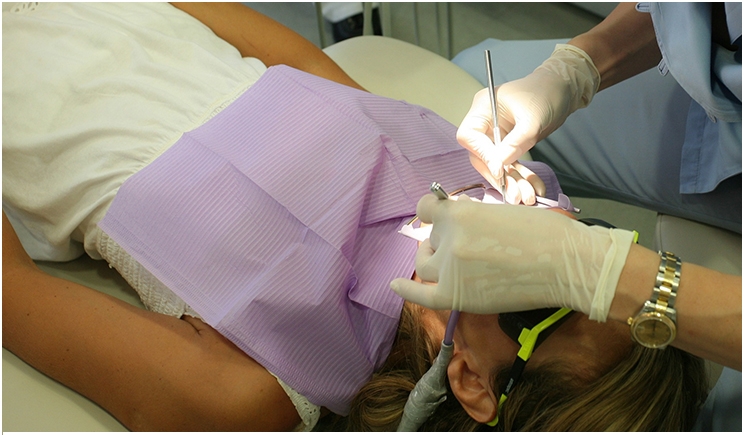
We all understand the importance of retaining existing patients and of attracting new ones to cultivate a thriving dental practice. But how can you precisely calculate the value of each patient who walks through your door? Using publicly available data, statistical models can provide insight about how various metrics will impact your patients’ customer lifetime value (CLV). These models also will help illustrate that changing just a few key metrics can have a major positive impact on your patients’ CLV.
A Simple Model
According to research from Henry Schein, the average dental practice has an annual patient attrition rate of 17%. This statistic is confirmed by data provided from Dental Intelligence, which also reported that the top 10% of practices only observe a 3% attrition rate. We can use this information to calculate the expected number of times that a typical patient will visit your practice.
In general, if your patient attrition rate is x%, the average number (the expected value) of years your patients will stay with your practice throughout their lifetime is 1/(x%) years. So, this means that in the average dental practice, the typical patient will stay with the practice for 1/0.17 years, or about 5.88 years. If your active patients visit your practice twice a year, this amounts to roughly 11.76 expected visits throughout their lifetime.
However, when discussing CLV, it’s also important to remember that a satisfied patient can also add value to your practice by referring other patients. Let p be the expected number of referrals that a patient will make. Then, to calculate the CLV (in visits) of a patient, we use the following formula:
CLV in visits = (expected number of visits from the patient) + (referral value)
= (expected number of visits from the patient) + p*CLV [1]
After a bit of algebra, we find that CLV = (expected number of visits from the patient)/(1 – p). This is the CLV in terms of visits. So, in the average practice with a 17% attrition rate, we can expect a typical patient to contribute 11.76/(1 – p) visits, including referrals. Referral rates can vary, but if you assume p = 0.25 (roughly one in 4 patients refers a new patient), then this means that the average patient is worth 11.75/(1 – 0.25) = 15.7 visits throughout a lifetime. To convert the CLV from visits to dollars, we can simply multiply by the average production per visit, and then multiply that by the collections rate:
CLV in dollars = (CLV in visits) * (average production per visit) * collections rate
Lessons We Can Learn
In the simple model described above, there are 4 major factors that contribute to your practice’s customer lifetime value: attrition rate, referral rate, production per visit, and collections rate. If you can reduce your attrition rate and increase your referral rate, production per visit, and collections rate, you can greatly increase your patients’ average CLV.
All of these metrics play an important role in your patients’ CLV, but attrition rate has the most dramatic impact and should be prioritized first. If your practice has a high attrition rate, then you will simply lose patients more quickly than you can possibly acquire them, which is bad news for the long-term health of your dental practice.
The best way to decrease attrition rate is to provide the best patient experience possible. A satisfied patient is most likely to stay with your practice and to refer additional patients. But there are also some other key performance indicators (KPIs), such as pre-appointment rate and recall rate, that are highly correlated with patient retention rate. To visualize how small changes to these KPIs can greatly impact your practice’s growth over time, you can use ValuePenguin Software’s Dental Practice Patient Growth Simulator.
Measuring your practice’s performance in the 4 key metrics mentioned above (attrition rate, referral rate, production per visit, and collections rate) will help you identify inefficiencies, create actionable strategies to optimize your practice, and improve your patients’ CLV.
Mr. Quinn is a co-founder of Software Pundit, which provides in-depth product reviews and resources to help business owners make well-informed decisions. At ValuePenguin Software, he leverages his analytical background, stemming from his years of experience in the financial services industry, to provide data-driven research that helps dental practices thrive. He can be reached at brian@softwarepundit.
[1] This is only true if p < 1. If p >= 1, the CLV is infinite. However, it must be that p < 1, since there is a finite number of people in the world. In practice, p is substantially less than 1.
Related Articles
Pre-Appoint Your Patients to Improve Your Retention Rate
Improve Care and Revenue With Patient Relationship Management Technology


